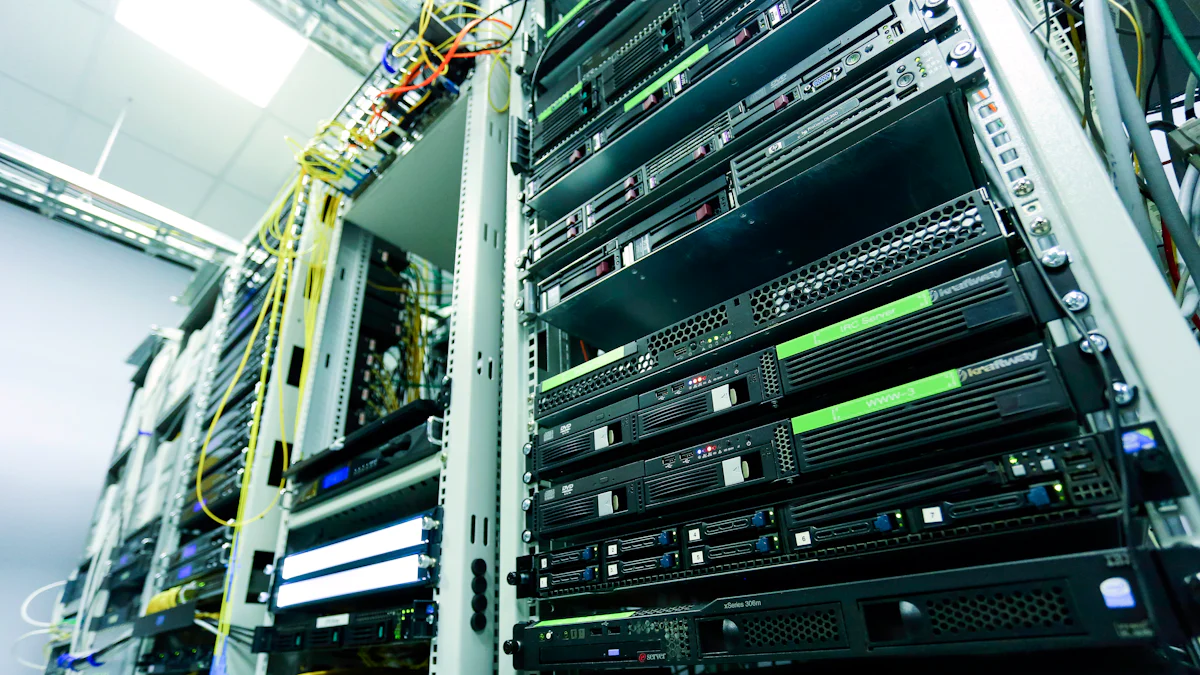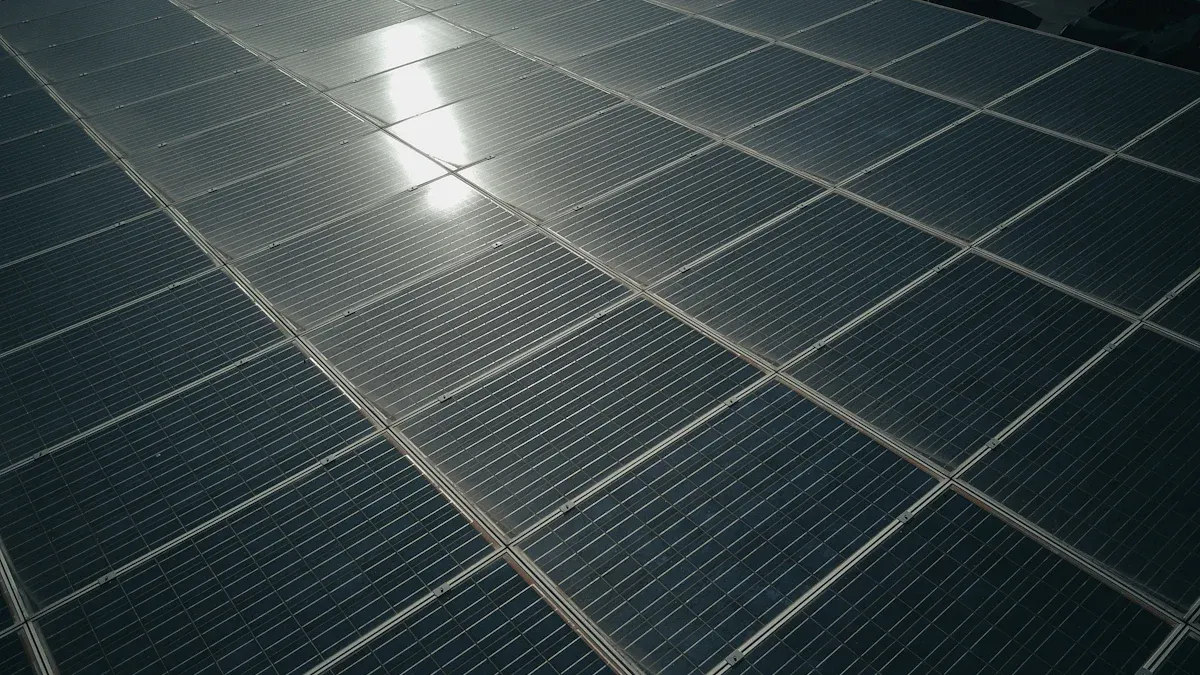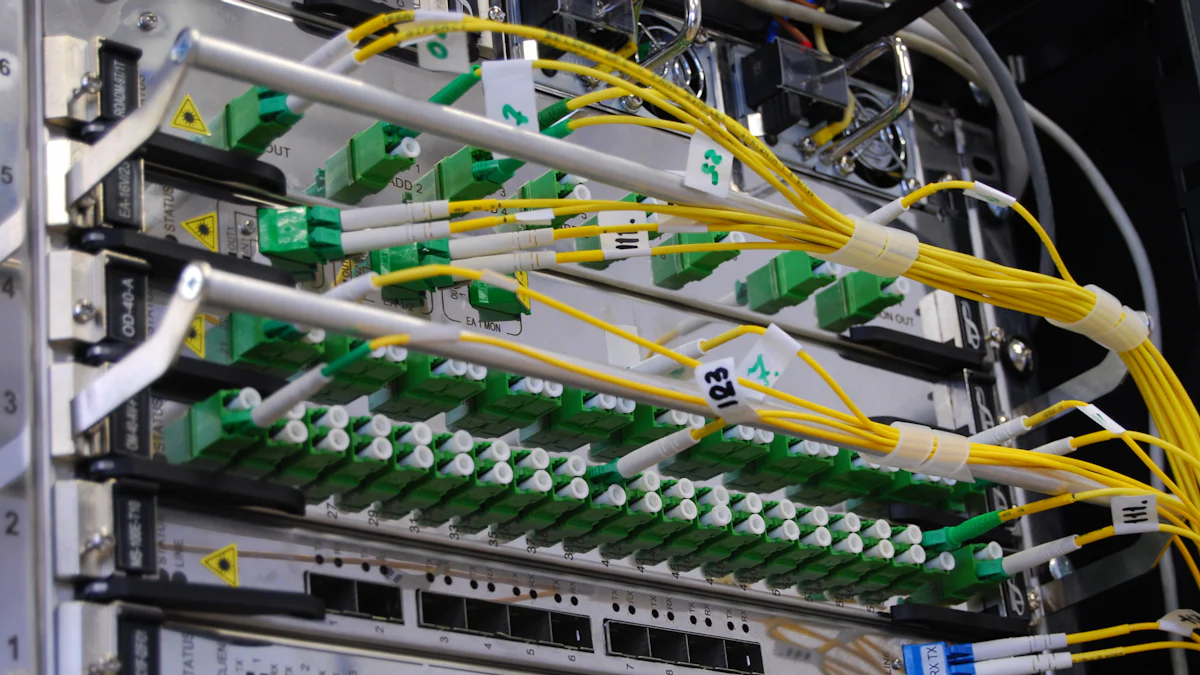ESTEL Innovations in Inverter Efficiency and Thermal Management

Efficient inverters and good cooling are key for powerful electronics, particularly when considering inverter efficiency. These systems manage rising heat, growing from 330 W/cm² to 520 W/cm² in five years. Poor cooling leads to almost half of electronic failures. ESTEL's new ideas improve reliability, enhancing inverter efficiency and providing better performance and longer-lasting devices.
Key Takeaways
Good cooling systems are important for powerful electronics. They stop overheating and make devices work better for longer.
Special materials like SiC nanowires help get rid of heat. This improves how inverters work and makes electronics last longer.
Clever designs that include cooling early can lower heat stress. This keeps temperatures steady and improves how the system works overall.
Challenges in Inverter Efficiency and Thermal Management
Heat Dissipation in High-Power Electronics
Getting rid of heat is a big problem for powerful electronics. When devices use more power, they make more heat. Too much heat can cause overheating and make systems less reliable. Problems like high heat can hurt how well power electronics work. Cooling methods like microchannel cooling and liquid immersion cooling help solve these problems. These techniques move heat away faster, keeping devices cool even with high power use.
Scientists are testing new materials like SiC nanowires to improve heat flow. These materials create better paths for heat to escape, cooling devices quickly. Using smart cooling methods can stop heat problems and keep systems working well.
Power Losses and Efficiency Concerns
Power loss is a big issue for inverter systems. It affects energy use and system performance. Inverters work best when power loss is low during DC to AC conversion. Things like sunlight levels and how long systems run affect efficiency. Studies show inverters work best when sunlight is above 350 W/m².
You can use tools like performance ratio and system loss data to find ways to improve. Better cooling systems can lower heat resistance, making inverters more efficient. By focusing on these tools, systems can work better and waste less power.
Thermal Stress and System Reliability
Changing temperatures can damage inverter parts over time. Heat changes and sunlight can wear out parts like capacitors and semiconductors faster. Research shows using a one-year mission profile can lower the predicted lifetime of PV inverters by 7%.
Good cooling systems and smart designs can reduce heat stress. This helps systems last longer and work better. By using strong thermal management, you can keep electronics reliable and performing well in different conditions.
ESTEL's Innovations in Thermal Management and Efficiency

New Cooling Methods for Powerful Systems
Cooling high-power electronics needs smart methods to keep them working well. ESTEL uses advanced cooling systems to handle heat problems in electronics. One example is direct-to-chip cooling, which stops overheating and boosts system performance.
Digital tools help make cooling systems better. These tools predict how well cooling will work and improve designs. AI technology also helps by adjusting cooling systems to save energy and keep temperatures steady.
Smaller and flexible designs work with these cooling methods. They lower heat and can be used for different power levels. This makes them perfect for powerful chips and devices.
Better Materials for Improved Efficiency
The materials used in electronics affect how well they cool. ESTEL uses special materials to improve heat flow and save energy. For example, SiC nanowires help move heat away faster, keeping systems cool.
These materials also make electronics last longer. They can handle high heat, so devices work well even in tough conditions. By using these materials, ESTEL creates cooling systems that are strong and reliable.
Smart Designs for Stable Temperatures
Keeping electronics stable is important for their performance. ESTEL designs systems with cooling in mind from the start. Simulations show how parts interact, helping create better cooling solutions.
Testing designs in simulations speeds up improvements and saves money. Changing shapes, like heat sink designs, makes cooling work better. Picking the right materials also makes systems lighter and more efficient.
These designs do more than just cool. They make systems stronger and less affected by temperature changes. ESTEL’s focus on early cooling planning ensures reliable and efficient solutions for powerful electronics.
Benefits of ESTEL's High-Efficiency Solutions
Improved Inverter Efficiency and Performance
ESTEL's solutions make inverters work better and save energy. Their rectifiers are very efficient, losing little energy during conversion. Some models are 97% efficient, cutting costs and saving power. These systems also need less cooling, making them eco-friendly. ESTEL uses smart cooling methods to keep devices working well under tough conditions. This focus on efficiency helps systems use energy wisely and perform better overall.
Reduced Thermal Stress for Greater Reliability
Good cooling is important for keeping electronics reliable. ESTEL's cooling systems remove heat quickly, protecting parts from overheating. Overheating can break electronics, but stable temperatures prevent this. ESTEL uses strong materials and designs that handle high heat. These features make electronics last longer and work well in hard conditions. With ESTEL's cooling, systems stay dependable over time.
Extended System Longevity and Cost Savings
ESTEL's designs help electronics last longer and save money. Modular systems can grow as needed, reducing replacements. Lithium-ion cabinets store more energy and last longer than regular batteries. Battery prices have dropped 89%, making them cheaper now. Using ESTEL's technology means fewer repairs and lower costs. This saves money and makes systems a better investment for high-power needs.
Real-World Applications of ESTEL's Innovations

Renewable Energy Systems and Solar Inverters
ESTEL's ideas are helping renewable energy systems, like solar inverters. These systems change energy efficiently, wasting less and giving more power. When used with solar panels, ESTEL's tech saves grid electricity. This helps telecom companies spend less money over time. Also, ESTEL's rectifiers use less energy, cutting costs and lowering electricity bills.
In faraway places, ESTEL's systems are a green choice for telecom networks. They give steady power, even in tough conditions. This makes them a top pick for renewable energy projects. The table below shows the main benefits of ESTEL's work in this area:
Evidence Description | Impact |
|---|---|
Works with renewable energy systems | A green option for telecom networks in remote locations. |
High efficiency of ESTEL rectifiers | Uses less energy and cuts running costs. |
Combines with solar panels | Saves grid electricity, lowering long-term spending. |
Industrial Automation and High-Power Drives
In factories, ESTEL's rectifiers help manage energy efficiently. These systems give steady and reliable power to industries. As more factories use renewable energy, ESTEL's solutions fit well with solar and wind projects. Their cooling methods keep systems working well, even with high power.
Electric cars also gain from ESTEL's technology. EVs need good power systems, and ESTEL provides just that. Their cooling systems keep EV electronics stable and efficient. The table below shows how ESTEL's solutions perform in industrial settings:
Factor | Description |
|---|---|
Energy Efficiency | Rectifiers save energy and manage power well. |
Renewable Energy Integration | Works with solar and wind projects reliably. |
Electric Vehicle Market Growth | Supports EVs with efficient power systems. |
ESTEL’s ideas solve problems with inverter efficiency and cooling. Their systems cut power waste, last longer, and work better. These solutions help renewable energy and factories perform well in tough conditions.
Future Outlook:
Companies with a CSAT score over 85% grow faster. This shows ESTEL’s focus on making great products.
Using new tech improves energy conversion by 20%. This proves ESTEL’s drive to improve inverter technology.
ESTEL leads in making smarter and better solutions for powerful electronics.
FAQ
1. How does ESTEL make inverters more efficient?
ESTEL uses better cooling, strong materials, and smart designs. These features lower energy waste and improve power conversion.
2. Can ESTEL's systems work in tough conditions?
Yes, ESTEL uses sturdy materials and clever designs. These keep systems working well in hot and challenging places.
3. Are ESTEL's ideas good for renewable energy?
Definitely! ESTEL's technology works well with solar and wind power. It saves energy and lowers costs. 🌱
See Also
Exploring ESTEL Cooling Solutions for Industrial Cabinet Needs
Telecom Cabinet Energy Storage with ESTEL Smart Microgrid Integration
Telecom Cabinets Powered by Grid-Connected Solar Inverter Systems
Selecting Optimal Cooling Solutions for ESTEL Telecom Cabinets
CALL US DIRECTLY
86-13752765943
3A-8, SHUIWAN 1979 SQUARE (PHASE II), NO.111, TAIZI ROAD,SHUIWAN COMMUNITY, ZHAOSHANG STREET, NANSHAN DISTRICT, SHENZHEN, GUANGDONG, CHINA

